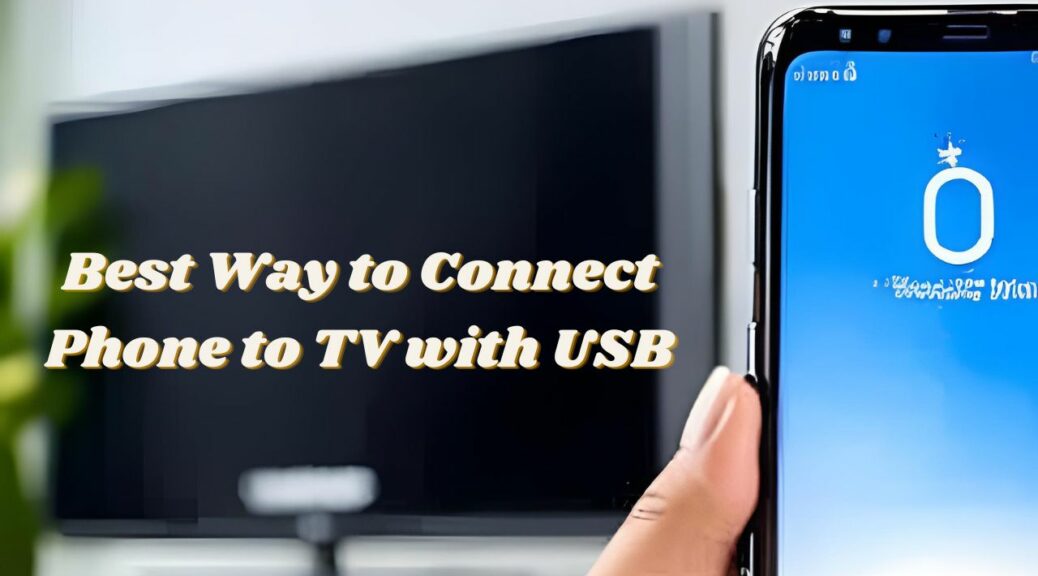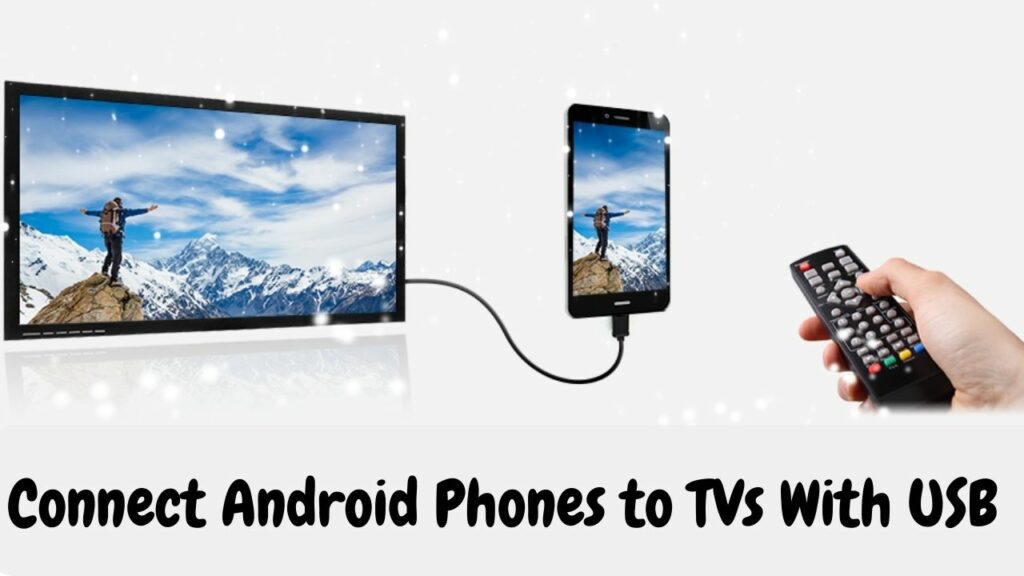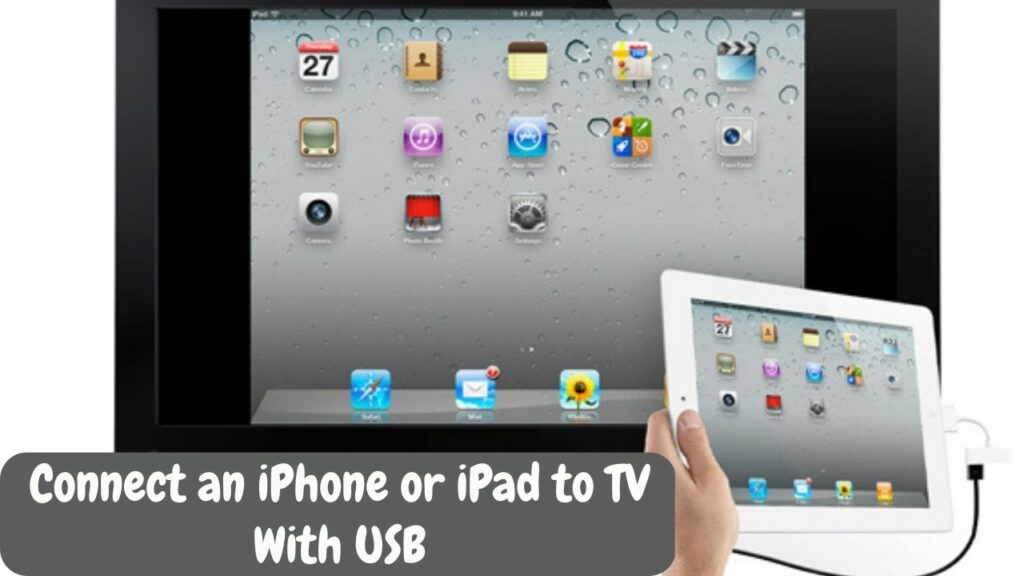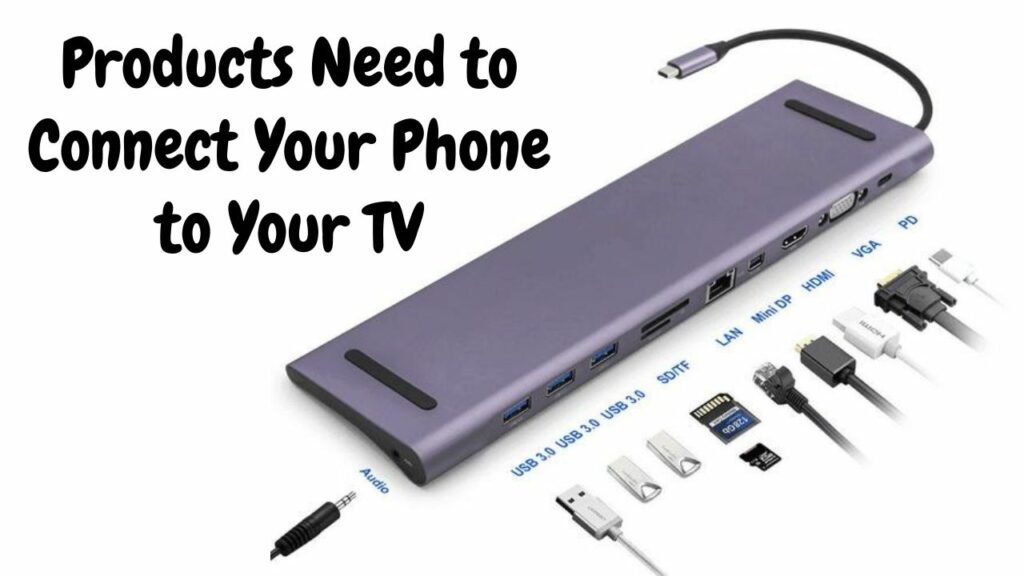
What is The Best Way to Connect Phone to TV with USB?
In today’s world, we are more connected than ever before. It’s common to want to share content from our phones or tablets with friends and family on a bigger screen. One of the easiest ways to do this is by connecting your phone or tablet to your TV using a USB cable. In this article, we’ll guide you through the process step by step so that you can enjoy your media on the big screen.
Why need to Connect the Phone to the TV with a USB?
Connecting your phone to your TV using a USB cable can be a great way to enjoy your favorite photos, videos, and other media on a larger screen. It also allows you to charge your phone while using it, eliminating the need for a separate charging cable. One of the main advantages of connecting your phone to your TV via USB is that it can provide a more stable and reliable connection than wireless options like Bluetooth or Wi-Fi. This can result in better video and audio quality, especially if you’re streaming high-resolution content. Another benefit is that it can make it easier to navigate and control your media, as you can use your phone as a remote or even mirror your phone’s screen on your TV. This can be especially useful for playing games, browsing social media, or using apps that are not available on your TV.
Simple and Easy: Connecting Your Phone to TV via USB Cable
While there are many different ways to connect your phone to your TV, one of the simplest and most convenient methods is to use a USB cable. So, here are the steps which you need to follow the steps to connect your phone to the TV with the help of a USB cable.
Step 1: Check the Compatibility of Your Phone or Tablet
Before you begin, you need to check if your phone or tablet is compatible with USB OTG (On-The-Go). USB OTG is a feature that allows devices to act as hosts, which means they can read data from USB drives, cameras, and other peripherals. To check if your phone or tablet supports USB OTG, you can use an app like USB OTG Checker or USB Host Diagnostics.
Step 2: Get the Right Cable
Once you’ve confirmed that your device supports USB OTG, you’ll need to get a USB cable that can connect your device to your TV. There are two types of USB cables you can use: HDMI-to-USB and USB-to-HDMI. HDMI-to-USB cables are used when your TV has an HDMI input, while USB-to-HDMI cables are used when your TV has a USB input.
Step 3: Connect Your Phone or Tablet to Your TV
Once you have the right cable, you can connect your phone or tablet to your TV. Here’s how:
- Connect the HDMI-to-USB cable to your TV’s HDMI input, or the USB-to-HDMI cable to your TV’s USB input.
- Connect the other end of the cable to your phone or tablet’s USB port.
- Turn on your TV and select the HDMI input or USB input that you connected your phone or tablet to.
- Your phone or tablet’s screen should now be displayed on your TV.
Step 4: Adjust Your Settings
Depending on your phone or tablet, you may need to adjust your settings to ensure that your media is displayed correctly on your TV. Here are some tips:
- If your media is not displayed in full screen, go to your phone or tablet’s display settings and select “Cast screen” or “Screen mirroring.”
- If the aspect ratio of your media is incorrect, go to your phone or tablet’s video player settings and adjust the aspect ratio.
- If the audio is not playing through your TV, go to your phone or tablet’s sound settings and select “Output to TV.”
How to Connect Android Phones and Tablets to TVs With USB?
Connecting your Android device to your TV can be a hassle, especially if you are not familiar with the technicalities involved. Fortunately, it is now possible to connect your Android phone or tablet to your TV using a USB cable, which provides a stable and reliable connection for streaming videos, playing games, or even giving presentations.
In this guide, we will walk you through the steps on how to connect your Android phone or tablet to your TV with USB, so you can enjoy your favorite content on a bigger screen. We will cover everything from the equipment you need to the settings you need to adjust, so you can get your device connected in no time.
What You Will Need
Before we get started, there are a few things you will need to have on hand. Here is a list of the equipment you will need:
- An Android phone or tablet with a USB port
- A TV with a USB port or an HDMI port and an HDMI-to-USB adapter
- A USB cable that is compatible with your Android device
- A stable internet connection

Connecting Your Android Device to Your TV with a USB
Once you have all the equipment ready, it’s time to start connecting your Android device to your TV with USB. Follow these simple steps:
- Connect your Android device to your TV using a USB cable. If your TV has a USB port, simply connect one end of the USB cable to your device and the other end to your TV’s USB port. If your TV does not have a USB port, use an HDMI-to-USB adapter to connect your device to your TV’s HDMI port.
- Once your device is connected to your TV, change your TV’s input source to the corresponding HDMI port.
- Your Android device should automatically detect that it is connected to a TV and adjust its display settings accordingly. If not, go to your device’s settings and select “Display” or “Screen Mirroring” and then select “HDMI” or “TV” as the output source.
- If you want to watch videos or play games, open the app or game on your Android device and it should automatically appear on your TV screen. If you want to browse the internet or display a presentation, open the app on your device and use the screen mirroring function to display it on your TV.
How do Connect an iPhone or iPad to TV With USB?
Many people wonder whether it is possible to connect their iPhone or iPad to their TV using a USB cable. The short answer is that it depends on the type of TV you have and the type of USB cable you use. In this article, we will explore the various methods you can use to connect your iPhone or iPad to your TV using a USB cable.

By using an HDMI Adapter
One of the most common ways to connect your iPhone or iPad to your TV is by using an HDMI adapter. This method involves connecting the HDMI adapter to your iPhone or iPad using a lightning cable and then connecting the HDMI cable to your TV. Once connected, you should be able to see your iPhone or iPad screen on your TV.
By using a USB-C to HDMI Cable
If you have a newer TV that has a USB-C port, you can use a USB-C to HDMI cable to connect your iPhone or iPad to your TV. This method involves plugging one end of the USB-C to HDMI cable into your iPhone or iPad and the other end into your TV’s USB-C port. Once connected, you should be able to see your iPhone or iPad screen on your TV.
By using a Lightning to USB Cable
If you have an older TV that does not have an HDMI or USB-C port, you can still connect your iPhone or iPad to your TV using a lightning-to-USB cable. This method involves plugging one end of the lightning to USB cable into your iPhone or iPad and the other end into a USB port on your TV. Once connected, you may need to change the input settings on your TV to see your iPhone or iPad screen.
By Using a Wireless Connection
If you do not want to deal with cables, you can also connect your iPhone or iPad to your TV using a wireless connection. This method involves using AirPlay to mirror your iPhone or iPad screen on your TV. To use AirPlay, both your iPhone or iPad and your TV must be connected to the same Wi-Fi network.
You may be able to use a mobile app or a universal remote to connect your TV to Wi-Fi. If your TV has a physical button for Wi-Fi, you may be able to use that as well. Alternatively, you can try to purchase a replacement remote for your TV.
What Supported Products Need to Connect Your Phone to Your TV With USB?
Connecting your phone to your TV can be a great way to watch your favorite movies and TV shows on a larger screen. There are many ways to do this, but one of the easiest ways is to connect your phone to your TV with a USB cable. In this article, we will discuss the supported products that you need to connect your phone to your TV with USB.

Supported Products for Android Phones
If you have an Android phone, you can connect it to your TV with a USB cable using the following supported products:
-
MHL Adapter
MHL stands for Mobile High-Definition Link. It is a technology that allows you to connect your Android phone to your TV with a USB cable. To use MHL, you need an MHL adapter that is compatible with your phone. You also need an HDMI cable to connect the adapter to your TV.
-
SlimPort Adapter
SlimPort is another technology that allows you to connect your Android phone to your TV with a USB cable. Like MHL, you need an adapter that is compatible with your phone, as well as an HDMI cable to connect the adapter to your TV.
-
USB Type-C to HDMI Adapter
If your phone has a USB Type-C port, you can use a USB Type-C to HDMI adapter to connect it to your TV. This adapter allows you to mirror your phone’s screen on your TV.
Supported Products for iPhones
If you have an iPhone, you can connect it to your TV with a USB cable using the following supported products:
-
Lightning to HDMI Adapter
To connect your iPhone to your TV with a USB cable, you need a Lightning to HDMI adapter. This adapter allows you to mirror your iPhone’s screen on your TV.
-
Apple TV
Another way to connect your iPhone to your TV is to use an Apple TV. Apple TV is a streaming device that allows you to watch movies, TV shows, and other content on your TV. To use Apple TV, you need a Wi-Fi network and an HDMI cable to connect it to your TV.
FAQs
Q.1 What is the best way to measure the size of the TV?
The best way to measure the size of the TV is to measure the diagonal length of the screen from one corner to the opposite corner.
Q.2 Can I connect any phone to my TV with a USB cable?
No, not all phones can be connected to a TV with a USB cable. You need to have a phone that supports USB connectivity and the appropriate adapters or cables to make the connection.
Q.3 What is the difference between MHL and SlimPort adapters?
MHL and SlimPort adapters are both technologies that allow you to connect your phone to your TV with a USB cable. The main difference is that MHL requires a separate power source, while SlimPort does not. Additionally, SlimPort adapters support higher resolutions and more audio formats compared to MHL.
Q.4 Can I use a USB Type-C to HDMI adapter for my iPhone?
No, USB Type-C to HDMI adapters is designed for Android phones with USB Type-C ports. If you have an iPhone, you need a Lightning to HDMI adapter to connect it to your TV with a USB cable. Alternatively, you can use an Apple TV to wirelessly stream content from your iPhone to your TV.
Conclusion
Connecting your phone or tablet to your TV using a USB cable is a simple and convenient way to share your media with friends and family on a bigger screen. With the right cable and a few easy steps, you can enjoy your favorite content in high definition without any hassle.